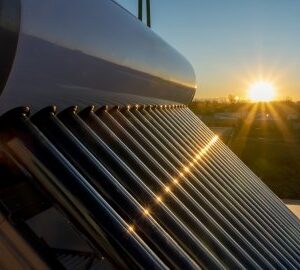Solar power is the conversion of energy from sunlight into electricity, either directly using photovoltaics (PV) or indirectly using concentrated solar power. Photovoltaic cells convert light into an electric current using the photovoltaic effect. Concentrated solar power systems use lenses or mirrors and solar tracking systems to focus a large area of sunlight to a hot spot, often to drive a steam turbine.
Photovoltaics were initially solely used as a source of electricity for small and medium-sized applications, from the calculator powered by a single solar cell to remote homes powered by an off-grid rooftop PV system. Commercial concentrated solar power plants were first developed in the 1980s. Since then, as the cost of solar electricity has fallen, grid-connected solar PV systems have grown more or less exponentially. Millions of installations and gigawatt-scale photovoltaic power stations continue to be built, with half of new generation capacity being solar in 2021.
In 2022 solar generated 4.5% of the world’s electricity, compared to 1% in 2015 when the Paris Agreement to limit climate change was signed. Along with onshore wind, in most countries the cheapest levelised cost of electricity for new installations is utility-scale solar.
Almost half the solar power installed in 2022 was rooftop. Additional low-carbon power, such as solar, has been recommended as part of a plan to limit climate change, but the International Energy Agency said in 2022 that more effort was needed for grid integration and the mitigation of policy, regulation and financing challenges.
